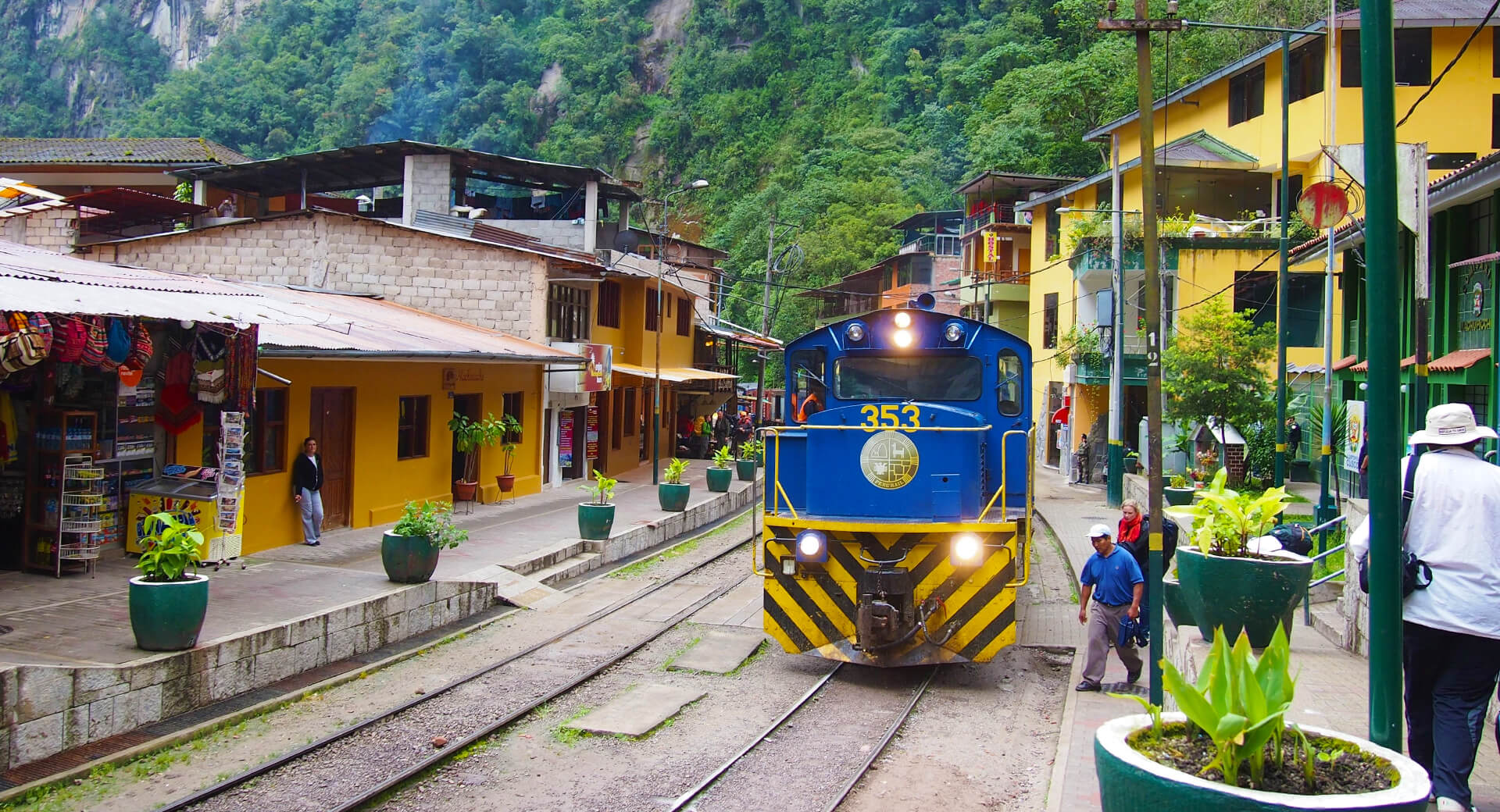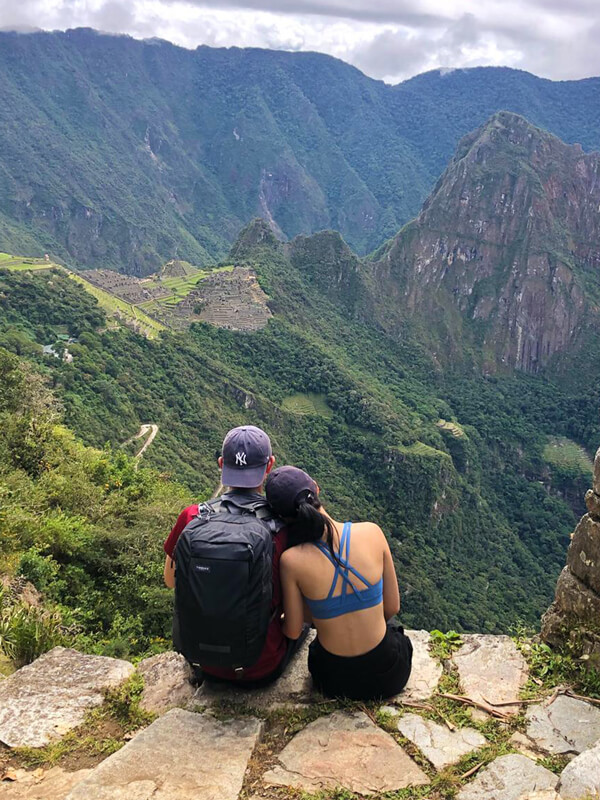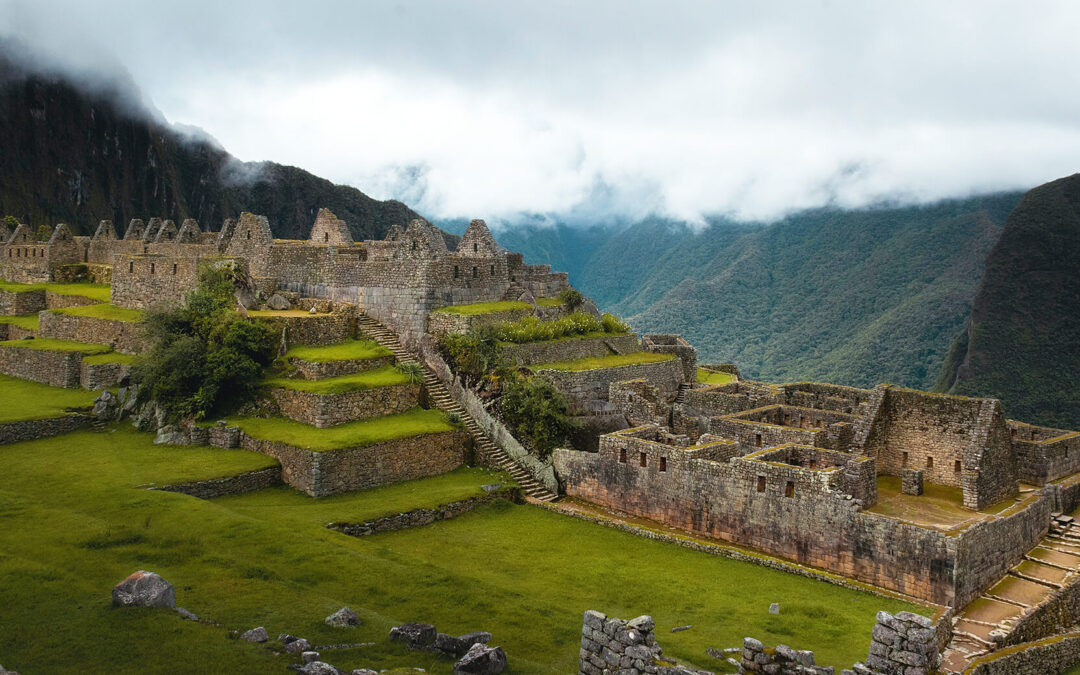Machu Picchu Tours: Unlocking Your Dream Journey to the Lost City of the Incas
Perched high in the Andes Mountains of Peru, the enigmatic citadel of Machu Picchu continues to captivate travelers worldwide. This “Lost City of the Incas” is more than just a destination; it’s a pilgrimage to a place of profound history, breathtaking scenery, and spiritual resonance. As tourism to Peru rebounds—with visitor numbers at Machu Picchu increasing year over year and visitor capacity regulated by the Peruvian government—the central question for every aspiring visitor remains: what is the best way to get there? The journey is as much a part of the experience as the destination itself.
Why Machu Picchu Captivates the World: A UNESCO World Heritage Site
Designated a UNESCO World Heritage Site in 1983, Machu Picchu stands as a marvel of Inca engineering and artistry. Its stone structures are perfectly integrated into the dramatic mountain landscape, creating a seamless blend of nature and human ingenuity. The purpose of this sacred site remains debated among historians, but its astronomical alignments and sophisticated agricultural terraces—such as those around the Temple of the Sun—point to its immense importance within the Inca civilization. Visiting this place is a chance to step back in time and witness the legacy of a powerful empire.
The Core Decision: Trek, Train, or Something Different?
Choosing one of our many Machu Picchu tours is the first and most crucial step in planning your adventure. Your decision will shape your entire experience. Do you dream of walking in the footsteps of the Incas, arriving on foot through the iconic Sun Gate after days of challenging hiking? Or do you envision a comfortable, scenic journey with panoramic views of the Sacred Valley unfolding from your window? Perhaps you seek a path less traveled—one that combines rugged nature with unique cultural encounters.

This guide is designed to demystify the options. We will explore the legendary Inca Trail, the luxurious and convenient scenic train, and the diverse world of alternative treks. By understanding the unique character, demands, and rewards of each path, you can confidently select the Machu Picchu tour that aligns perfectly with your travel style, fitness level, and dreams for this once-in-a-lifetime trip.
At a glance: Compare the key differences between the Inca Trail, a scenic train journey, and alternative treks
|
Feature |
Classic Inca Trail |
Scenic Train |
Alternative Treks (e.g., Salkantay) |
|---|---|---|---|
|
Experience |
Historical pilgrimage, high adventure |
Comfortable, scenic, relaxing |
Rugged nature, cultural immersion, and less traveled |
|
Duration |
4-5 days |
1-2 days |
4-7 days |
|
Physical Demand |
High (strenuous hiking, high altitude) |
Low (minimal walking required) |
High (often more challenging than the Inca Trail) |
|
Scenery |
Cloud forest, Inca ruins, Sun Gate arrival |
Sacred Valley views, Urubamba River, Andes mountains |
Glacial mountains, diverse ecosystems, remote |
|
Booking |
6-12 months ahead (permits are limited) |
1-3 months ahead recommended |
2-4 months ahead recommended |
|
Best For |
Avid hikers, history enthusiasts, and adventurers |
Families, time-limited travellers |
Serious trekkers, nature lovers, second-time visitors |
Option 1: The Iconic Inca Trail – A Pilgrim’s Path to Machu Picchu
 For many, the only way to truly “arrive” at Machu Picchu is to walk the same stone paths the Incas once did. The Inca Trail is not just a hike; it’s a journey through history, cloud forest, and breathtaking mountain passes, culminating in the unforgettable first glimpse of the citadel from the Sun Gate (Inti Punku). The classic multi-day route involves ascending to high-altitude passes—including the infamous Dead Woman’s Pass at 4,215 m—and descending into lush valleys. Along the way, you explore lesser-known but equally stunning Inca ruins inaccessible by other means. Because of its popularity and to preserve the trail, the Peruvian government strictly regulates the number of hikers and requires permits well in advance.
For many, the only way to truly “arrive” at Machu Picchu is to walk the same stone paths the Incas once did. The Inca Trail is not just a hike; it’s a journey through history, cloud forest, and breathtaking mountain passes, culminating in the unforgettable first glimpse of the citadel from the Sun Gate (Inti Punku). The classic multi-day route involves ascending to high-altitude passes—including the infamous Dead Woman’s Pass at 4,215 m—and descending into lush valleys. Along the way, you explore lesser-known but equally stunning Inca ruins inaccessible by other means. Because of its popularity and to preserve the trail, the Peruvian government strictly regulates the number of hikers and requires permits well in advance.
The Short Inca Trail (2-Day / KM 104)
For those with limited time or who prefer a less strenuous experience, the “Short Inca Trail” offers a fantastic alternative. This option involves a train ride to Kilometer 104 of the railway line, followed by a one-day hike. The trail ascends to the magnificent ruins of Wiñay Wayna before connecting with the classic trail. You still get the incredible experience of entering Machu Picchu through the Sun Gate in the afternoon. Typically, hikers spend the night in Aguas Calientes and return the next day for a full guided tour of the citadel.
Choosing Your Inca Trail Tour Operator: The Importance of a Certified Guide
Access to the Inca Trail is strictly regulated. You cannot hike independently; you must go with a government-licensed tour operator. A good guide is indispensable—they manage logistics, share deep insights into Inca culture and civilization, ensure your safety, and pace the group appropriately. When selecting an operator, look for experience, positive reviews, and a clear commitment to safety and sustainable tourism practices.
The Unsung Heroes: Making Ethical Choices for Inca Trail Porters
Behind every successful Inca Trail trek is a team of hardworking porters. These individuals, often from local Quechua communities in the Andes, carry gear, set up camps, and cook meals. Choosing your tour operator with their welfare in mind is a critical aspect of responsible tourism in Peru. Questions to ask include:
- Do they strictly adhere to the legal weight limit per porter?
- Do they pay fair wages and provide health insurance for porters?
- Are porters provided with suitable gear (hiking shoes, warm clothing, proper shelters)?
- Does the company invest in local communities?
Option 2: The Luxurious & Scenic Train Journey to Machu Picchu
For those who prioritize comfort, accessibility, and breathtaking scenery without the physical demands of a multi-day trek, the train journey to Machu Picchu is a world-class experience. The train ride eliminates concerns about altitude sickness during exertion and the need for extensive physical preparation. It’s an ideal choice for families, travellers with mobility challenges, or those on a tight schedule. Most train services depart from Ollantaytambo or Cusco (Poroy station) and arrive in Aguas Calientes, the town at the base of the citadel. From there, a 25-minute shuttle bus ride takes you up to the entrance of Machu Picchu.
Pros & Cons of the Train Trip to Machu Picchu
Pros:
- Accessibility: Suitable for all ages and fitness levels.
- Efficiency: Can be done as a day-trip from Cusco or the Sacred Valley.
- Comfort: Comfortable seating, onboard service.
- Stunning scenery: Huge panoramic windows offer uninterrupted views of the Urubamba River and the towering Andes mountains.
Cons:
- You miss the pilgrimage feel of hiking up the Inca Trail.
- You enter through the main gate, rather than the iconic Sun Gate arrival.
- Less time to acclimatize at high altitude compared to multi-day treks.
“Beyond the Sun Gate” for Train Travelers
While you won’t arrive through the Sun Gate, you can still experience its magic. Inside the citadel, a short uphill hike leads to the Sun Gate, allowing you to enjoy the classic panoramic view looking down upon Machu Picchu. It’s highly recommended for train travellers to complement their experience with this viewpoint.
Option 3: Embrace the Path Less Travelled – Alternative Treks to Machu Picchu
For adventurers who find the classic Inca Trail crowded or want a different kind of challenge, a wealth of alternative treks offer incredible scenery, cultural depth, and a greater sense of solitude. These trips often culminate in a final leg to Aguas Calientes, followed by a visit to Machu Picchu on the last day.
The Salkantay Trek
Named after the majestic peak Salkantay (6,271 m), this trek is renowned for its dramatic mountain scenery, high-altitude passes, and descent into the cloud forest. The Salkantay Trek is considered more physically demanding than the Inca Trail, but rewards serious hikers with remote landscapes and fewer crowds.
The Lares Trek
The Lares Trek offers a journey into authentic Andean life. Instead of focusing solely on Inca ruins, this route winds through remote Quechua villages where you can interact with local weavers and farmers. It’s a culturally immersive trek that combines high-altitude lakes, mountain passes, and rural hospitality with spectacular mountain views.
Other Notable Alternative Treks
- The Inca Jungle: A multi-activity tour popular with thrill-seekers, combining downhill mountain biking, zip-lining, and hiking.
- Choquequirao + Machu Picchu: An expedition-style trek to the “sister city” of Machu Picchu before finishing at the citadel itself.
These alternate routes are less regulated by the daily permit system of the Inca Trail, offering greater flexibility and accessibility.
Planning Your Machu Picchu Adventure: Essential Logistics & Practical Tips
With your ideal journey in mind, the final step is planning the logistics. Proper preparation is key to a smooth and enjoyable experience in Peru.
Best Time to Visit (Seasonality)
The dry season (April to October) is the most popular time to visit, offering sunny days and clear skies in the cloud forest and Andes. The wet season (November to March) sees more rain, and the Inca Trail is closed for maintenance every February. Planning your trip around the dry season will give you the best chance at comfortable trekking and perfect photo opportunities.
Mastering Altitude Acclimatisation
Cusco, the gateway to Machu Picchu, sits at 3,400 m (11,152 ft) above sea level. It’s crucial to spend at least two full days acclimatising in Cusco or the lower-elevation Sacred Valley before starting any trek or even visiting the citadel by train. Use the time to enjoy the valley’s archaeology and beautiful scenery, drink plenty of water, avoid heavy meals and alcohol, and shift into low-intensity activities. Altitude sickness is a real risk at higher elevations—particularly on the Inca Trail or the Salkantay route.
Essential Packing List for All Tours
- Passport & original ID (required for trek permits and Machu Picchu tickets).
- Layered clothing: the weather in the Andes can change in an instant.
- Comfortable footwear: broken-in hiking boots for hikes; sturdy walking shoes for train tours.
- Sun protection: hat, sunglasses, high-SPF sunscreen (the high altitude means strong UV).
- Day-pack: to carry water, snacks, camera, rain poncho (wet season).
- Hiking poles: especially useful on steep descents (guides often recommend trekking poles).
- Travel insurance: ensure coverage for high-altitude trekking.
Booking & Tour Operators
Whether you’re booking an Inca Trail trek or just train tickets to Machu Picchu, book well in advance—especially for peak season and high-demand trails. For example, the Peruvian government now caps daily visitors at Machu Picchu at up to 4,500–5,600 people per day in peak season, and requires only licensed guides on the trail. Working with a reputable travel agency (such as Andean Sky Travel) ensures your trek or tour is properly licensed, staffed by certified tour guides, and that the “quota and permit regulation” of the heritage site is respected.
Why Choose Andean Sky Travel
At Andean Sky Travel, we specialise in tailor-made experiences to the heart of the Andes. Whether you’re trekking the Inca Trail, travelling in luxury by train, or seeking an alternative route like the Salkantay or Lares treks, we design your ideal itinerary. We emphasise sustainable travel, respectful cultural interaction, ethical porter practices, and local support for Andean communities. Our team knows the high-altitude environment, routes like the classic Inca Trail and the short Inca Trail from KM 104, and the cloud forest regions, and ensures you’re prepared for everything—from altitude to wardrobe to mindset.
Conclusion
Choosing your path to Machu Picchu is a deeply personal decision. The historic Inca Trail offers an unparalleled sense of pilgrimage. The scenic train provides unmatched comfort and views. Alternative treks promise solitude, culture, and wild landscapes. There is no single “best” way—only the way that is best for you. By considering your personal style, time, fitness, and desires, you can craft an unforgettable journey to the heart of the Inca Empire. Your dream adventure in the mountains of Peru awaits! Contact us at Andean Sky Travel today to get the conversation started.
FAQs
1. What is the best Machu Picchu tour option for beginners?
For first-timers or travellers with limited time and moderate fitness, the train journey to Machu Picchu combined with a guided tour of the citadel in Aguas Calientes is a great choice—no multi-day trekking required, yet you still experience the wonder of the site.
2. What is the difference between the Inca Trail trek and the Machu Picchu train tour?
The Inca Trail trek is a multi-day hike through cloud forest and high-mountain passes culminating in arrival via the Sun Gate; it requires fitness and advance booking. The train tour is faster, more comfortable, and less physically demanding, offering scenic views and access to the Machu Picchu citadel without the trek.
3. Can I combine other day tours with a Machu Picchu trip?
Yes! One of the great advantages of working with a travel agency is the ability to combine day-tours in the Sacred Valley (Pisac, Ollantaytambo), excursions to places like the cloud forest, Humantay Lake, rainbow mountain, and more, with your Machu Picchu tour—all tailored seamlessly into your itinerary.
4. When is the best time of year to book Machu Picchu tours?
The dry season from April to October is considered ideal for Machu Picchu tours, offering clear skies and comfortable trekking conditions. Booking several months in advance ensures availability for Inca Trail permits and popular train routes.
5. How far in advance should I reserve Machu Picchu tours?
Due to strict permit regulations by the Peruvian government, travelers should secure Machu Picchu tours at least 3–6 months before departure, especially for the Inca Trail Trek. Train and alternative trek options can often be booked closer to your travel date.
6. Are Machu Picchu tours suitable for families or older travelers?
Absolutely. Many Machu Picchu tours are designed for all ages, offering scenic train rides, accessible walking routes, and guided experiences with minimal physical strain—perfect for families and seniors.
7. What should I pack for Machu Picchu tours and treks?
Pack layered clothing for changing mountain weather, hiking shoes, sun protection, and a lightweight daypack. Altitude and temperature changes are common, so preparation is key for enjoying Machu Picchu tours comfortably.
8. Are Machu Picchu tours open year-round?
Yes. Machu Picchu tours operate all year, though the Inca Trail closes each February for maintenance. Even during the wet season, the site remains open and lush, offering a unique, less-crowded experience.

